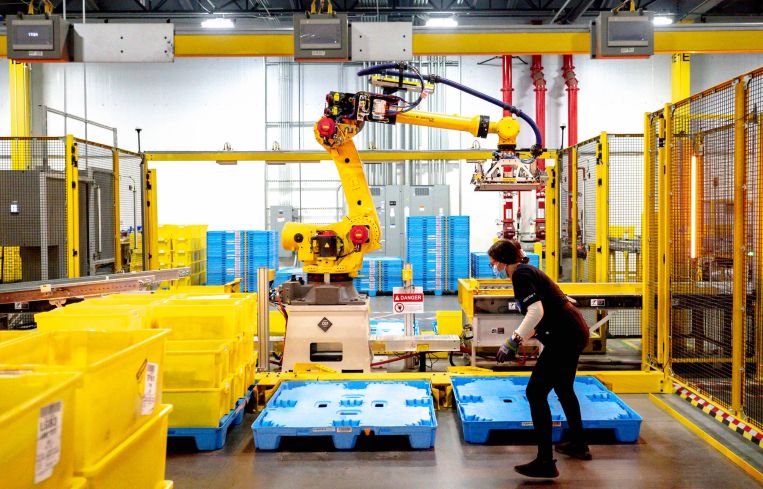Interest Rate Hikes Temper US Industrial Madness: Report
Warehouse real estate still performing better than most other asset classes
By Greg Cornfield August 29, 2023 6:25 pm
reprints
The once-crazed national industrial real estate market is taking a “collective deep breath” and calming down, new data shows.
The Federal Reserve’s interest rate hikes the past 18 months have significantly slowed the pace of new construction, normalized the level of investment sales, and tamed leasing activity in the United States, according to the latest report from analytics platform CommercialEdge.
Some 586 million square feet of warehouse projects started in 2021 and 615 million square feet started last year, but only 178 million square feet have started so far in 2023, the report said. Further, national industrial asset sales hit $128.2 billion in 2021 and $98.5 billion last year, but just $27 billion of sales closed through the end of July this year.
“The data continues to show the collective deep breath that we anticipated the industrial market taking as it comes off of the record growth of the past few years,” Peter Kolaczynski, senior manager of CommercialEdge, said in a statement.
But, even as capital becomes more expensive and harder to find, rent growth remains strong and vacancy rates are low, and industrial real estate is performing better than most other asset classes.
National in-place rents for industrial space averaged $7.39 per square foot in July, an increase of six cents from June and up 7.5 percent year-over-year, according to CommercialEdge’s data. The average rate for new leases signed in the last 12 months rose 7.5 percent to $9.90 per square foot.
“Although e-commerce cooled in the quarters coming out of the pandemic, the gains that were made have become entrenched,” CommercialEdge reported.
Rent in Orange County, Calif., is highest in the nation at $13.83 per square foot, followed by Los Angeles at $13.06. Miami’s average rent is up to $10.31 per square foot, while New Jersey is highest on the East Coast at $9.66 per square foot. Miami also recorded the highest rent growth in the South, up 9 percent annually in July.
Coastal markets have seen the largest spreads between in-place rents and the cost of a new lease. In the Inland Empire, leases signed in the last 12 months averaged $18.34 per foot, $9.37 more than the average of all in-place rents.
Meanwhile, the properties that do trade are seeing an uptick in pricing, from $124 per square foot in 2022 to $131 in 2023. Southern California’s Inland Empire continues to lead all markets in total investment sales with $2.8 billion closed in the first seven months, followed by Los Angeles with $1.8 billion and California’s Bay Area with $1.4 billion. Similarly, the markets with the highest average price per square foot can all be found in California, with the Bay Area at $344 per square foot, Los Angeles at $335, Orange County at $317 and the Inland Empire at $260.
Despite the recent construction starts, industrial vacancy remains low. The national average vacancy rate in the month of July was 4.4 percent, a 10-basis-point decrease from the previous month.
“We anticipate that once inflation cools, the question of soft landing versus recession is settled, and interest rates fall, the appetite for development and sales will return in force, though likely not at levels seen during the pandemic,” the report concluded.
Gregory Cornfield can be reached at gcornfield@commercialobserver.com.


